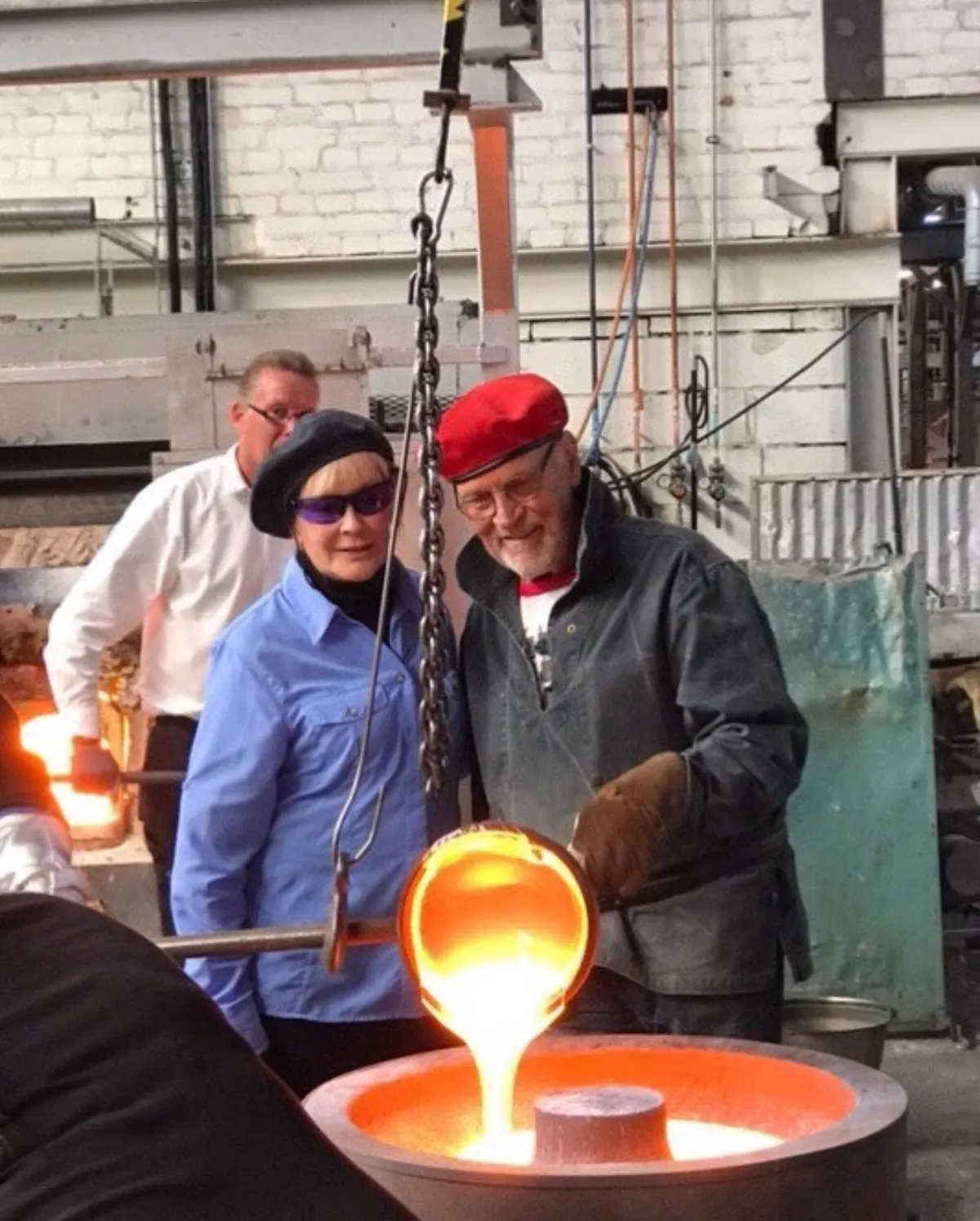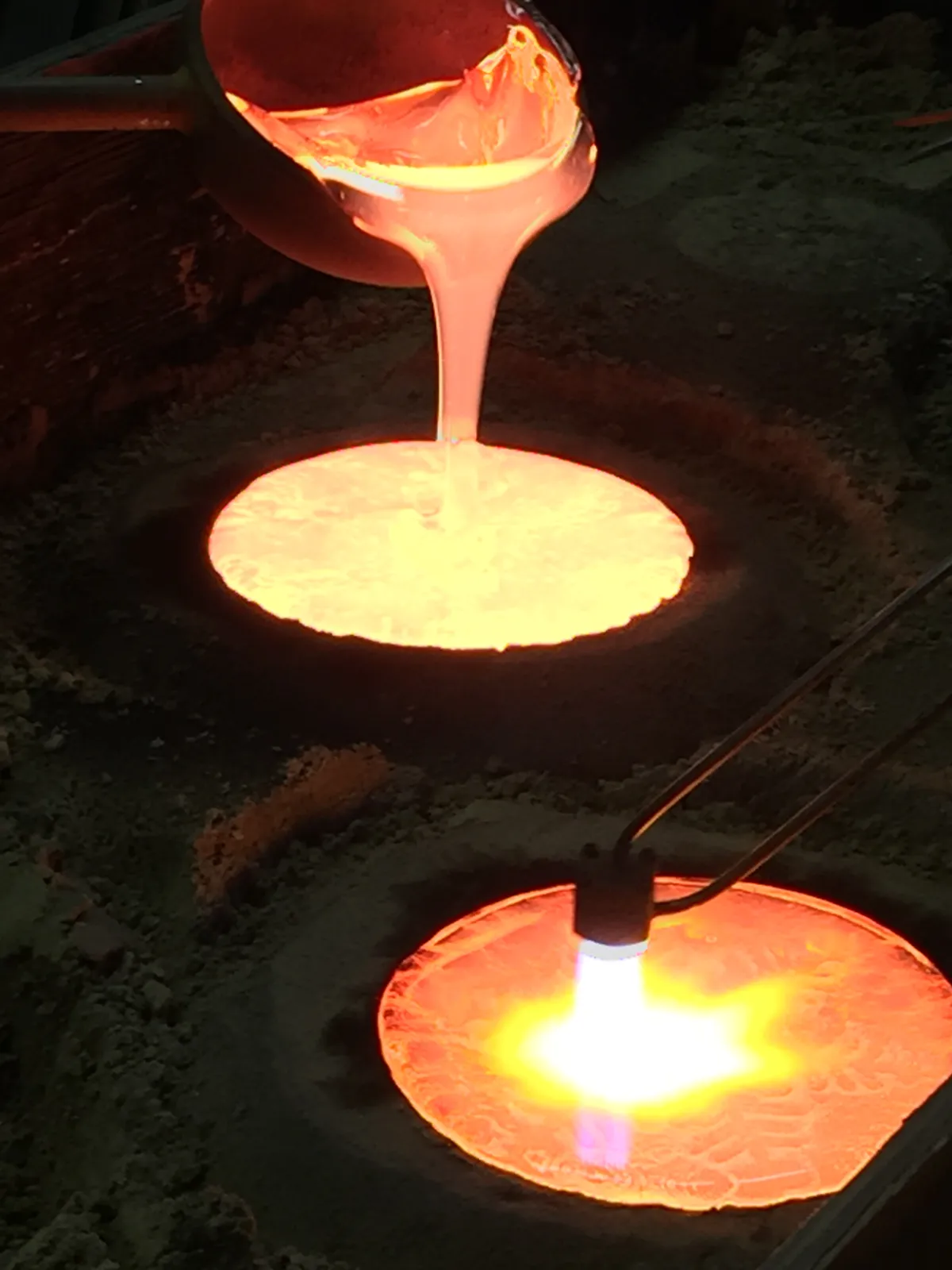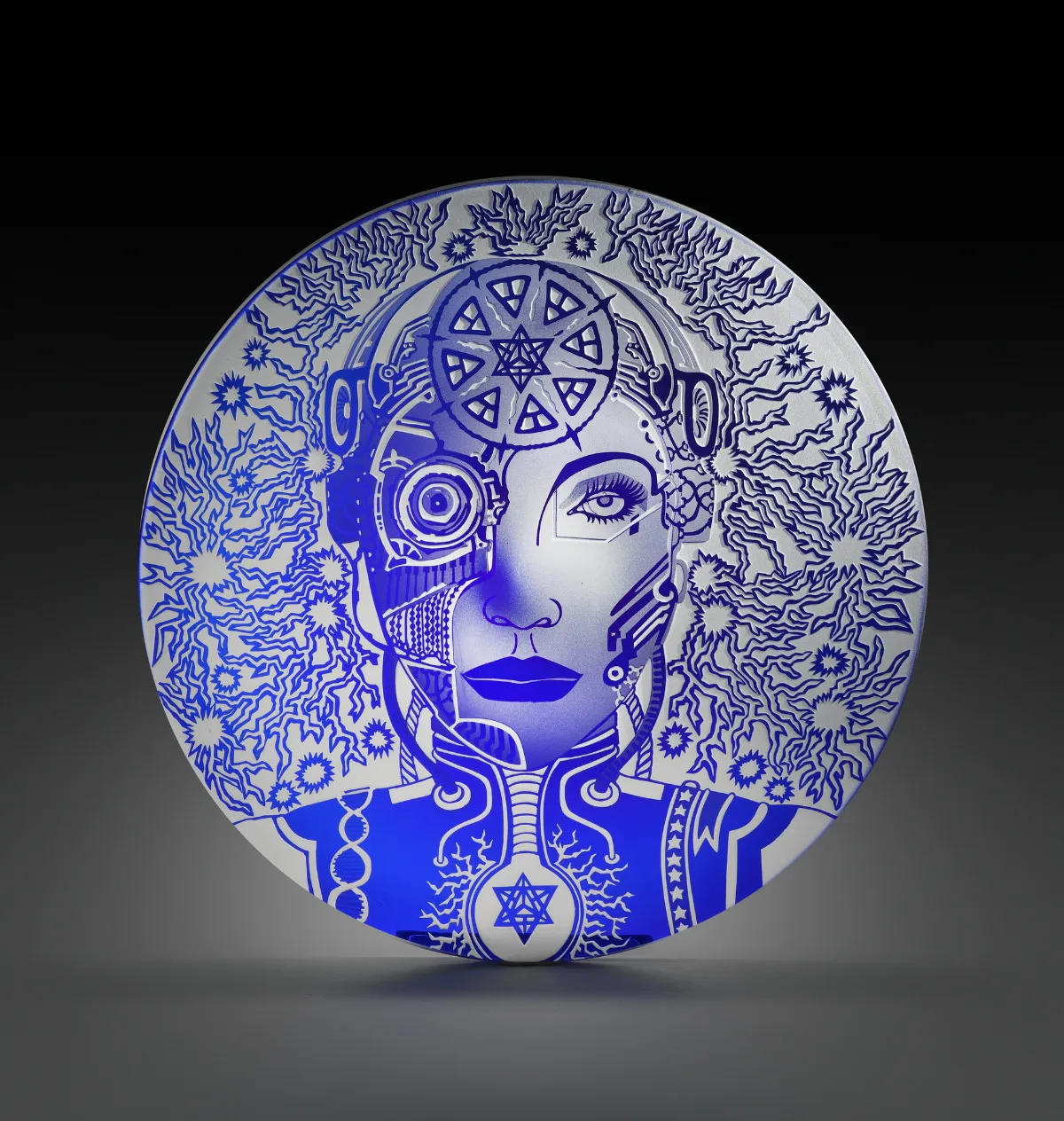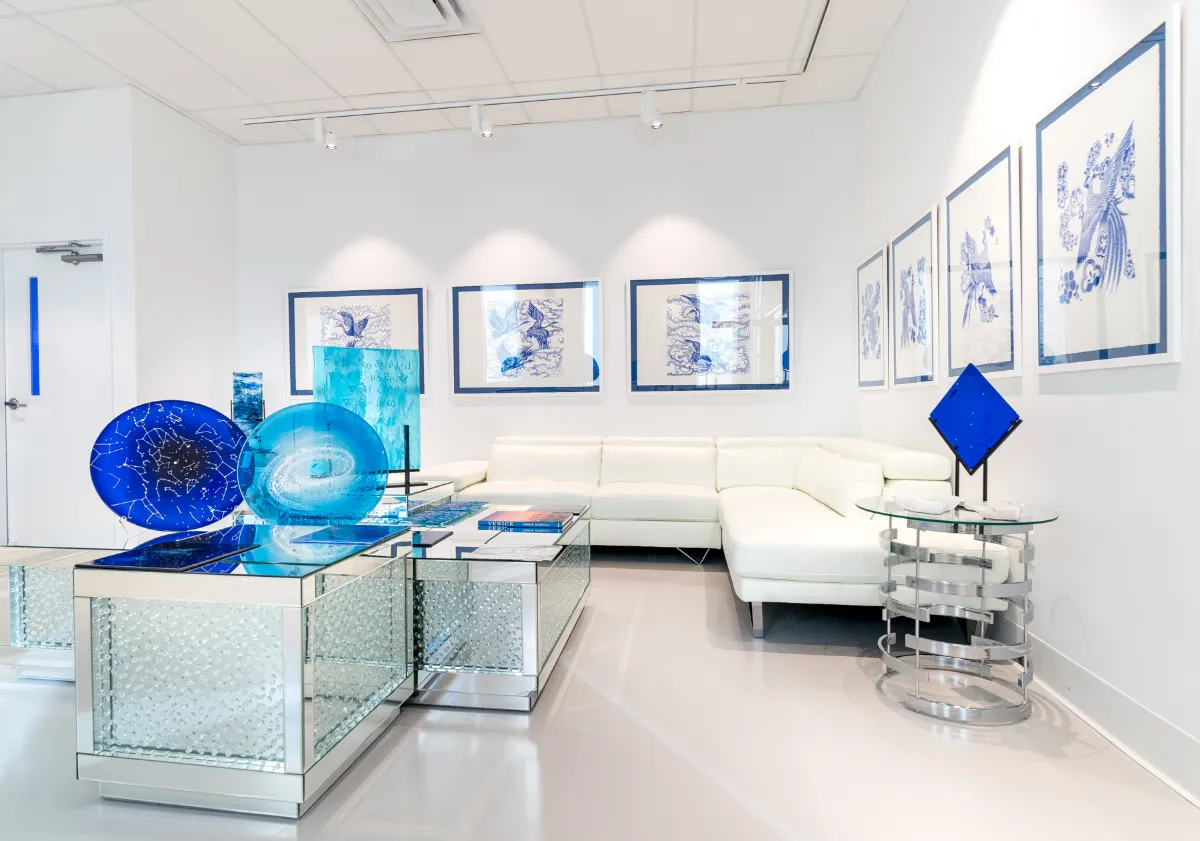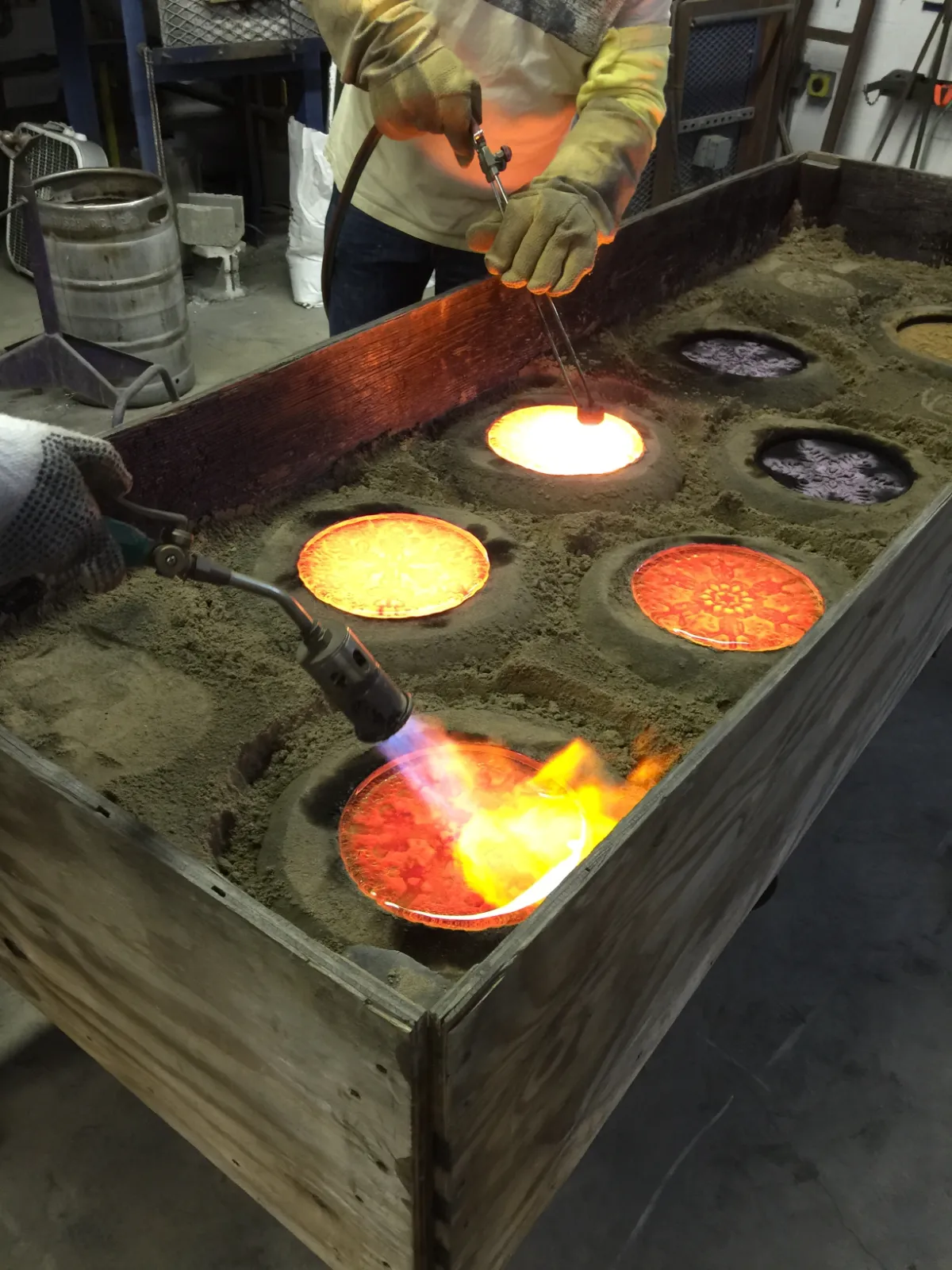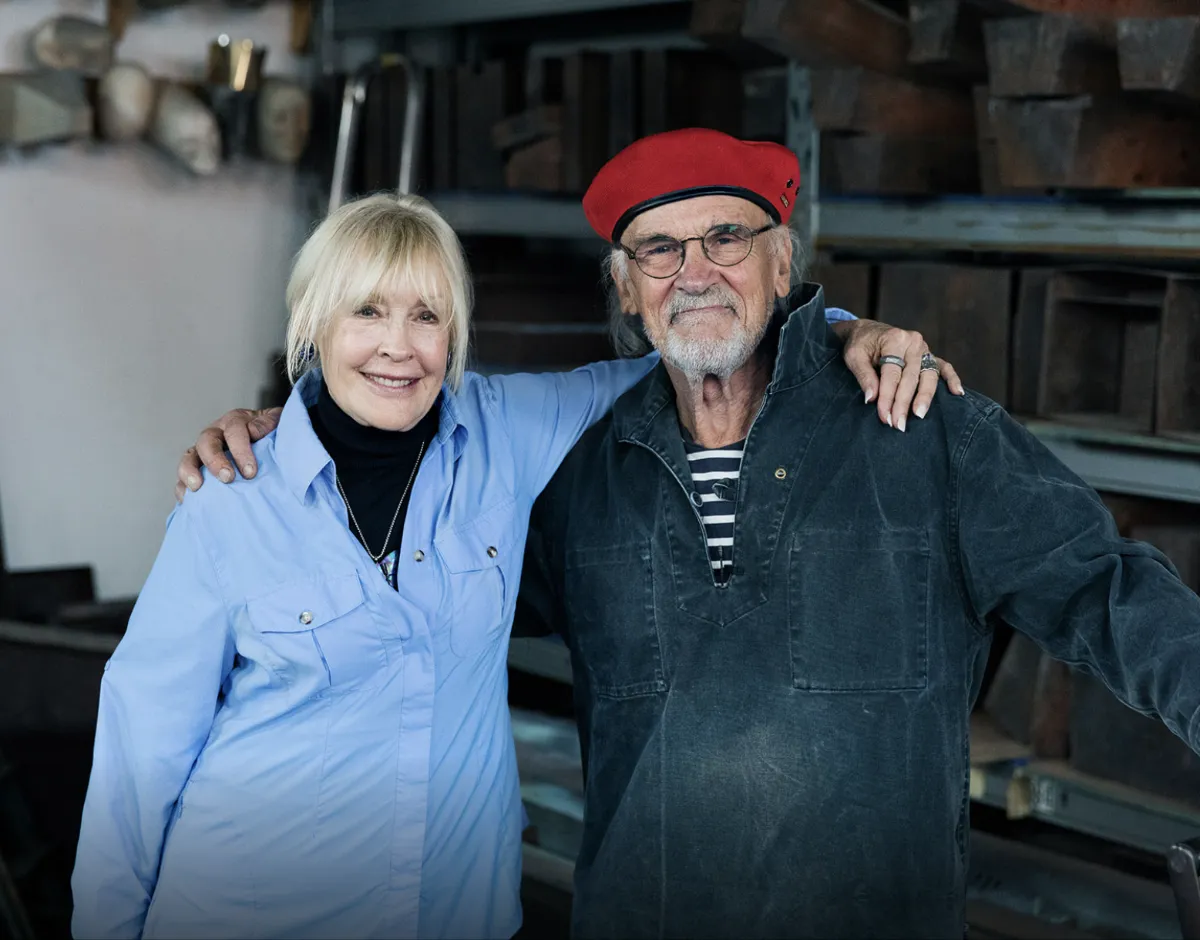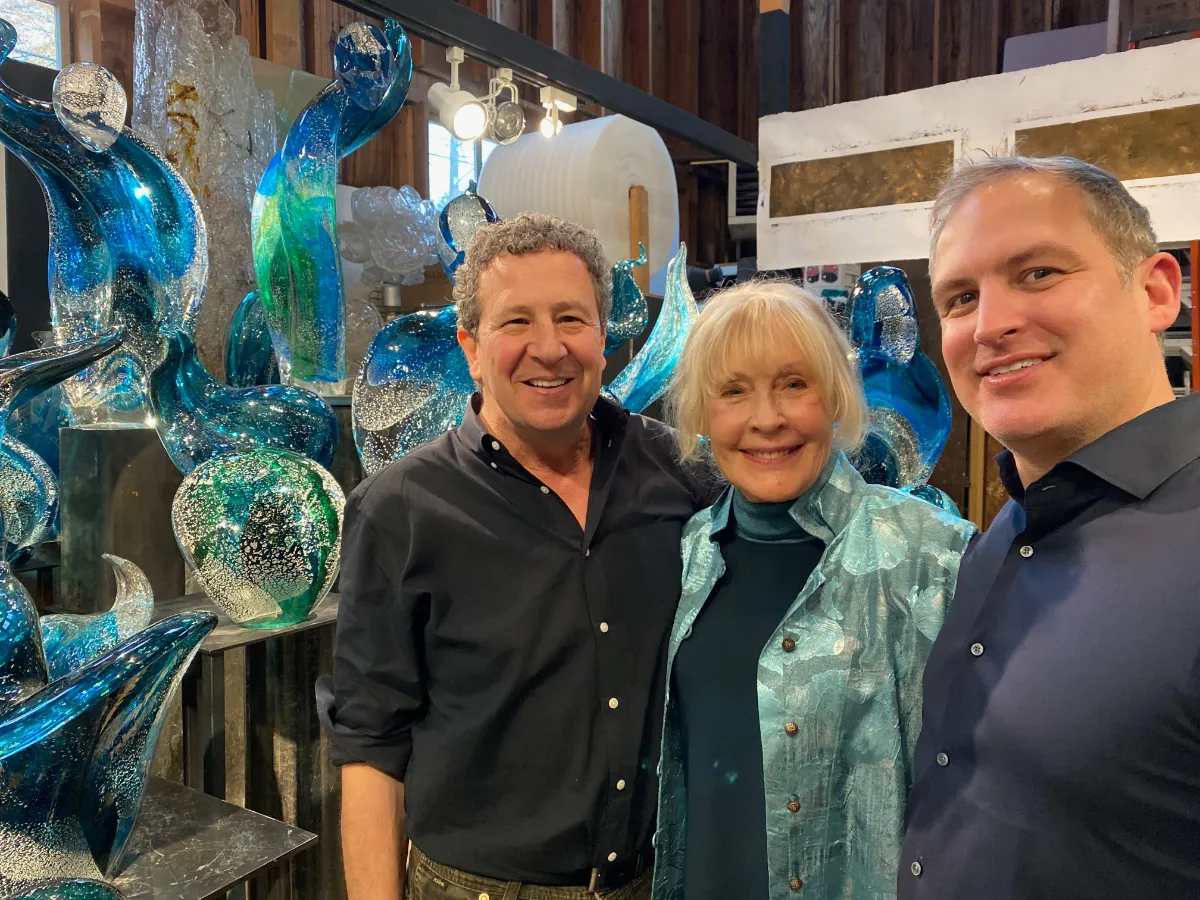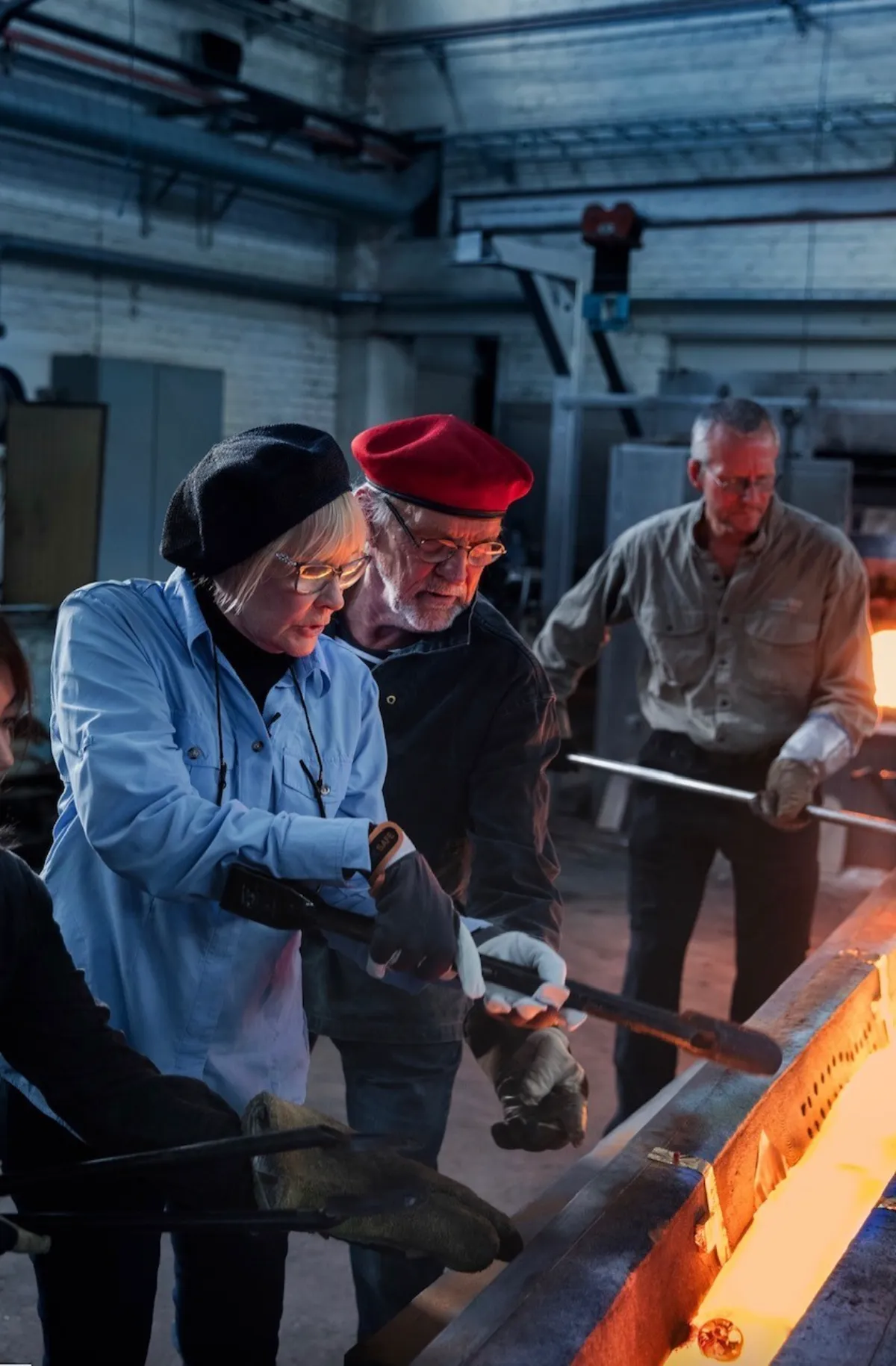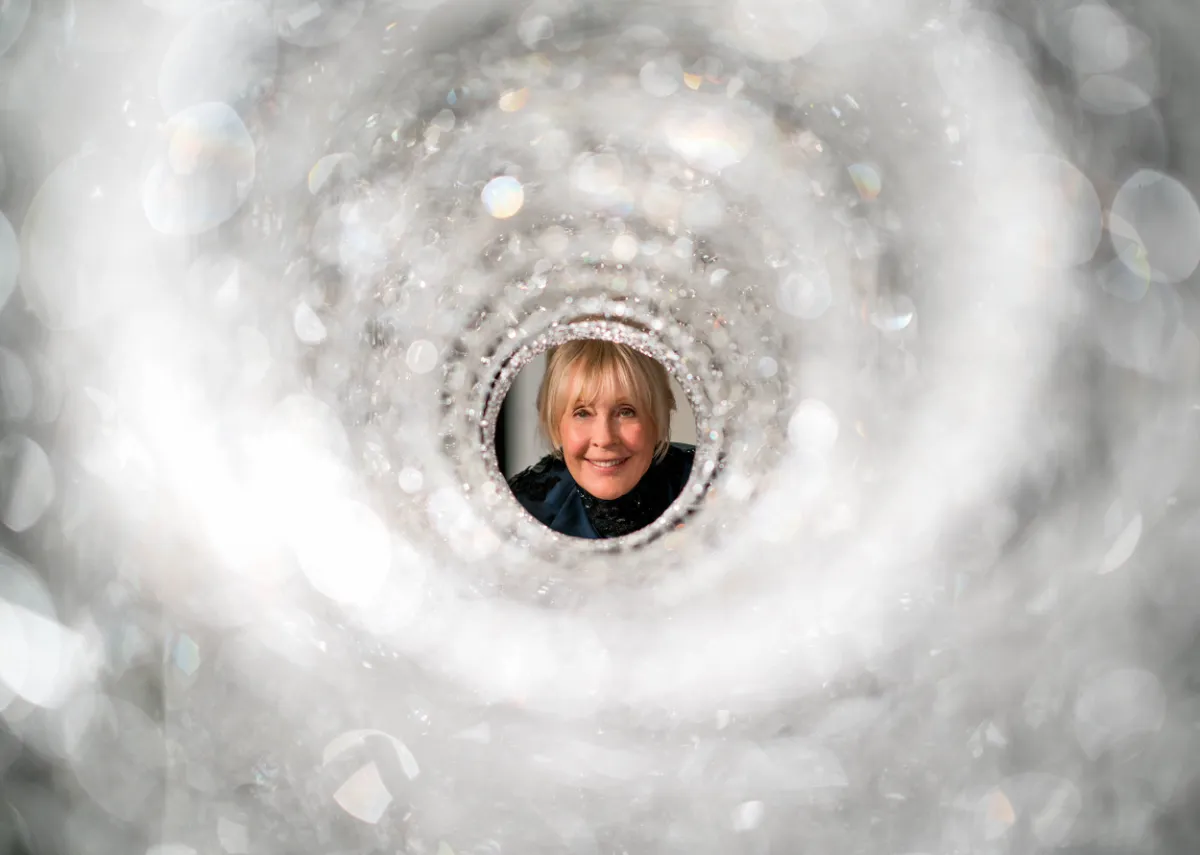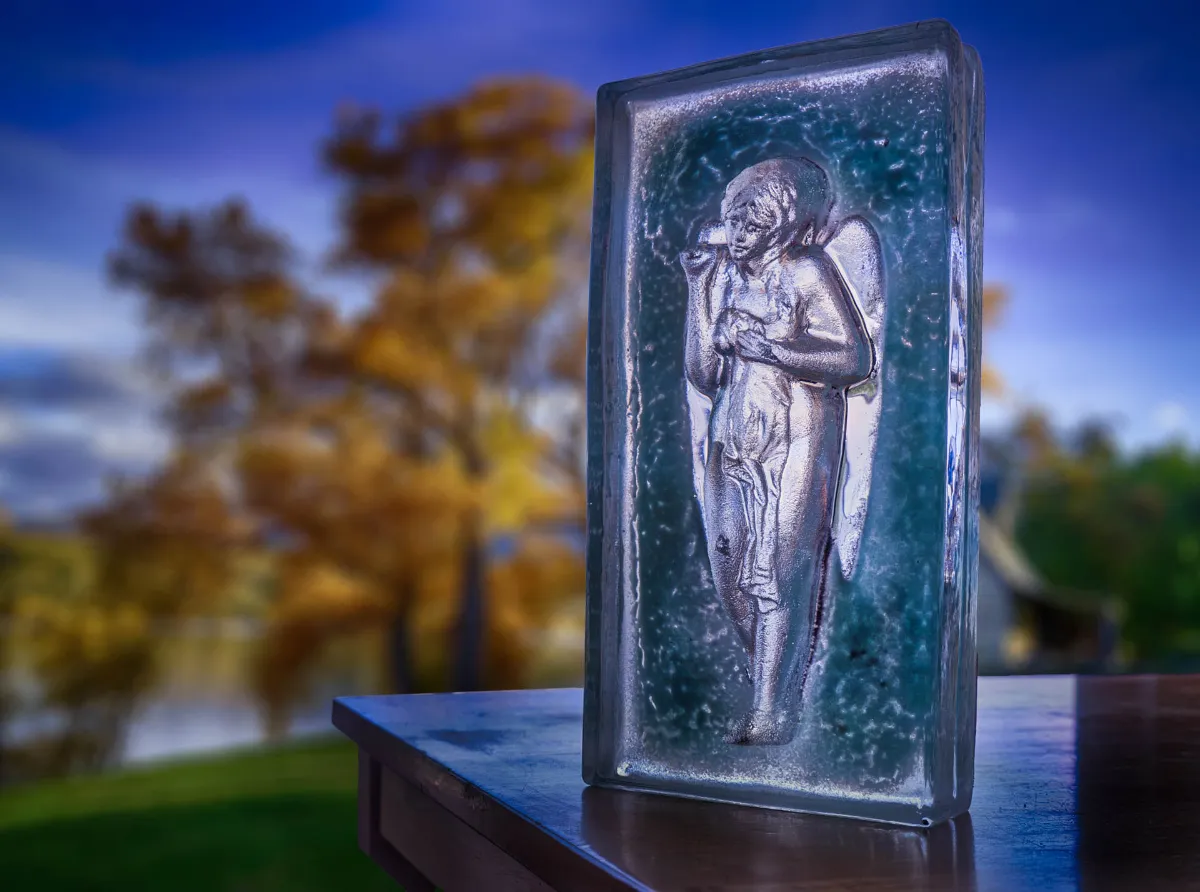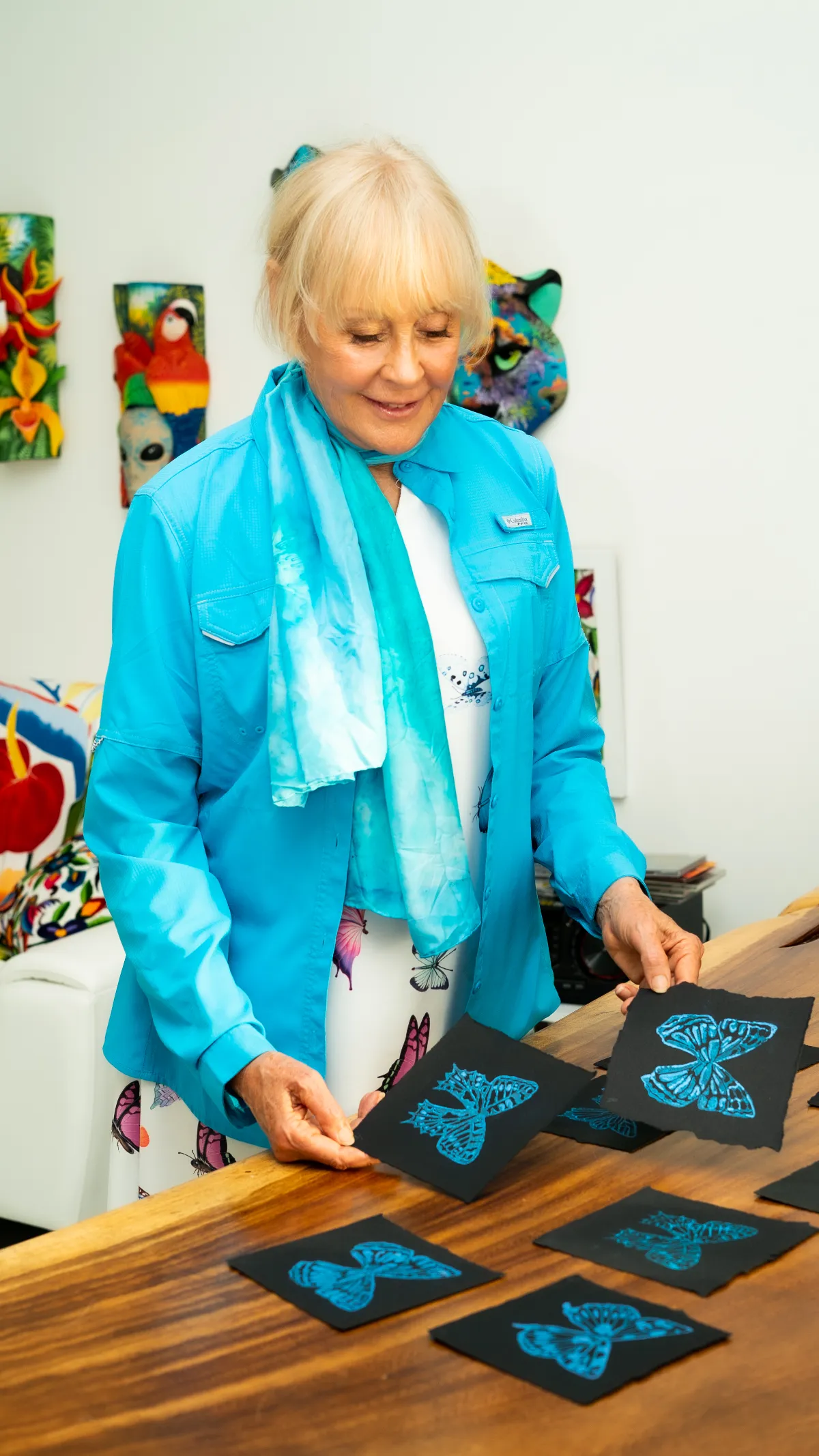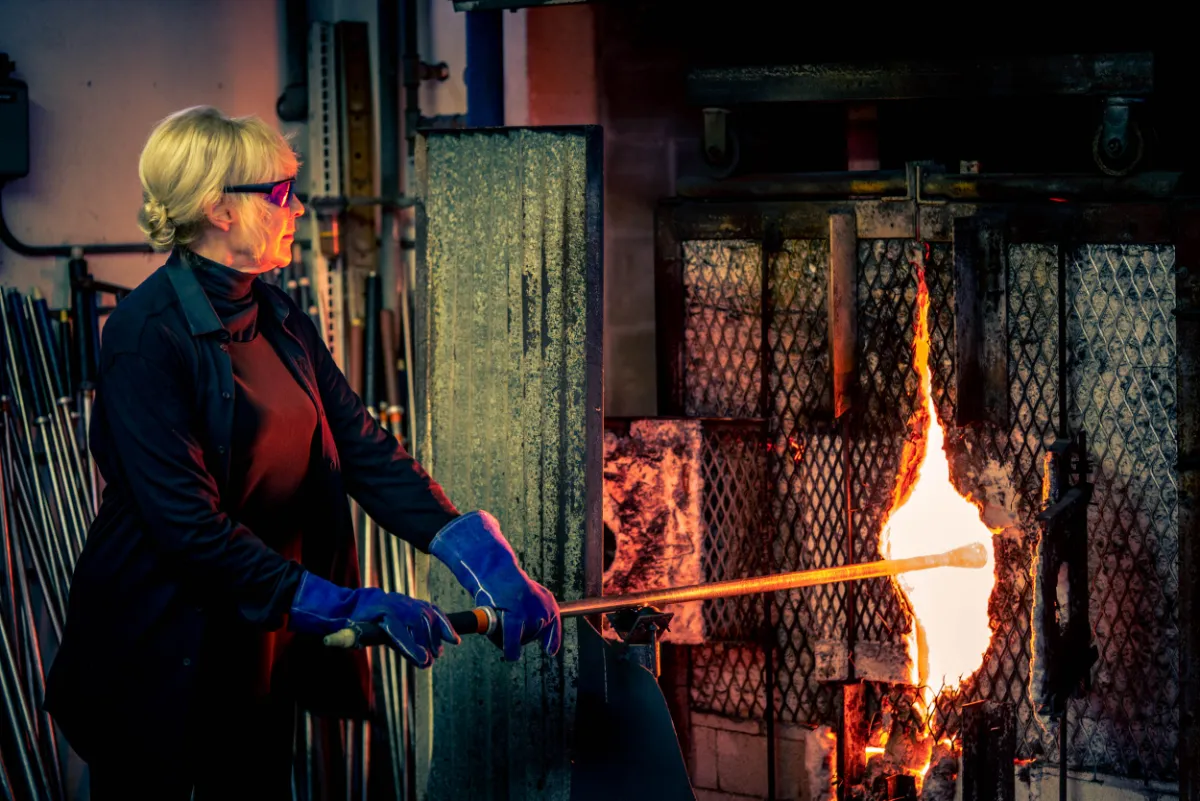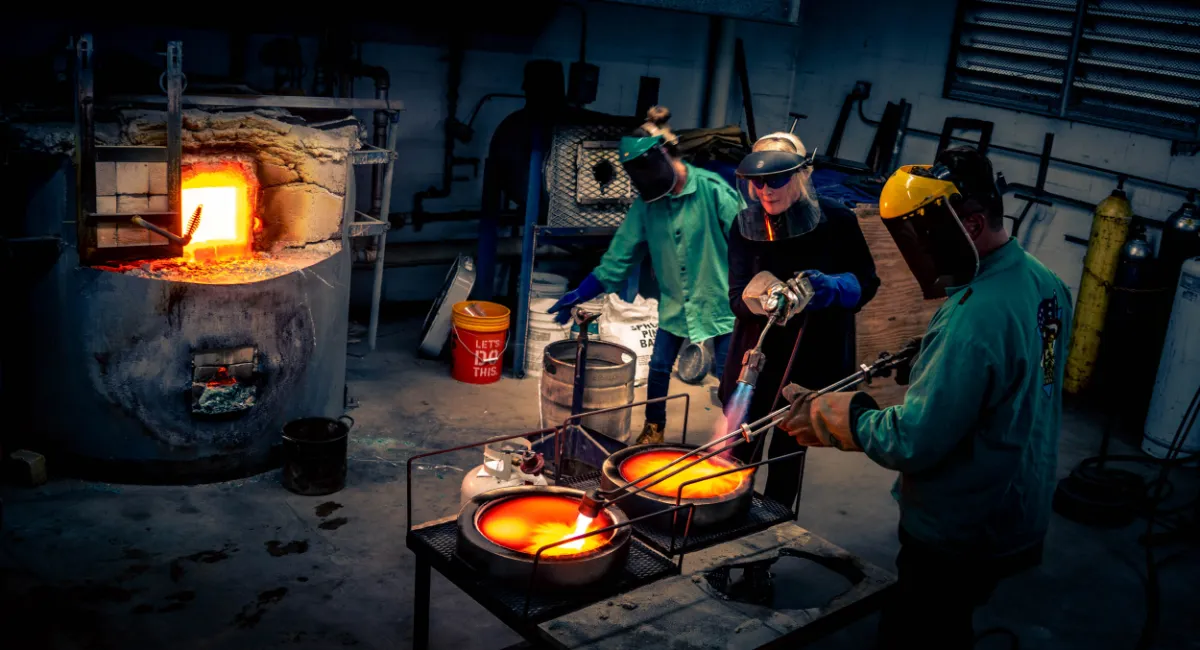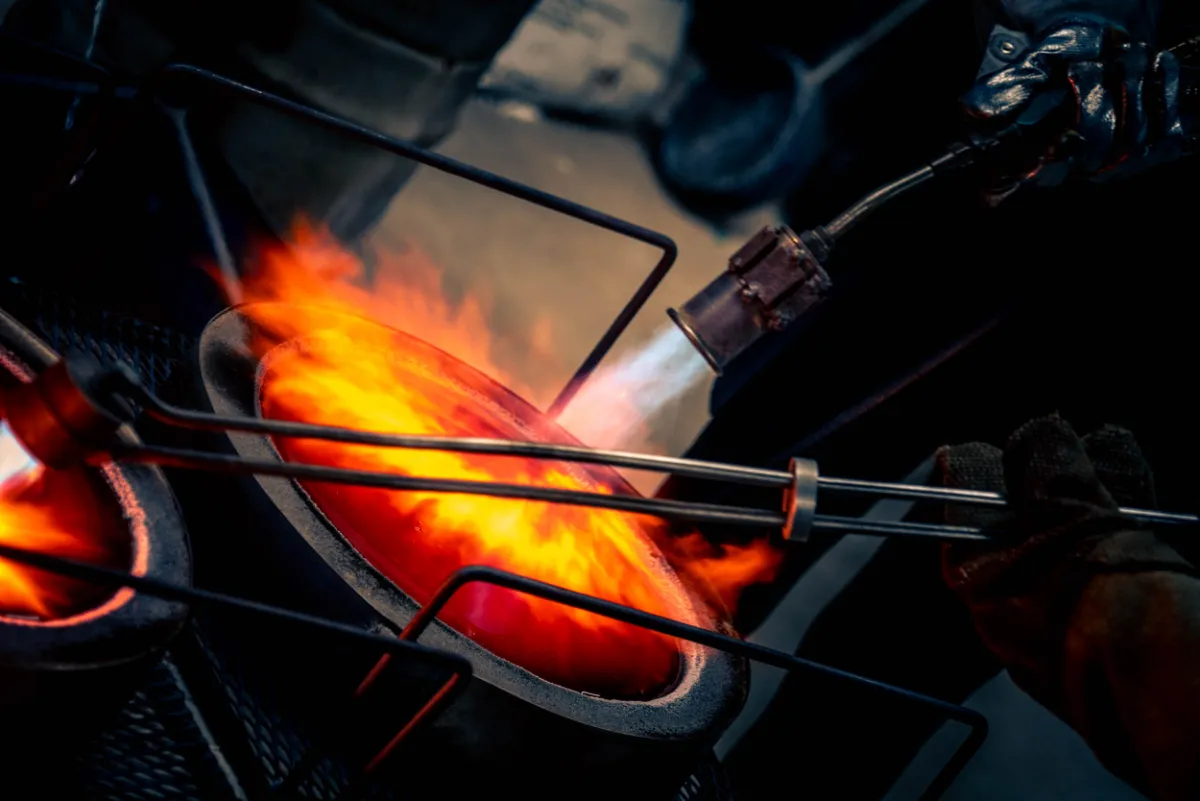Always dynamic and changing, glass can be fluid, soft, cold, hard, opaque, transparent, and more. In order to mold glass into its art form it must first be heated to between 2000 and 2300 degrees Fahrenheit. The basic techniques for working with glass are blowing, hot and kiln casting, fusing and flameworking.
The oldest, most traditional technique is glassblowing. It involves heating glass in a furnace, gathering molten glass on the end of a blowpipe and blowing a bubble of glass. The result can be as simple as a bottle or a Christmas tree ornament, or a complex sculpture.
Casting glass involves pouring molten glass into a mold, and allowing it to melt in a furnace. Glass can also be placed into the mold in solid pieces that melt in the furnace, conforming to the shape of the mold. Molds are also used also in glassblowing, especially when making production pieces, like bottles.
The flamework technique involves heating pencil-thin glass canes and fusing them over an open flame using a torch, tweezers, and other small tools. The result is delicate and highly detailed.

